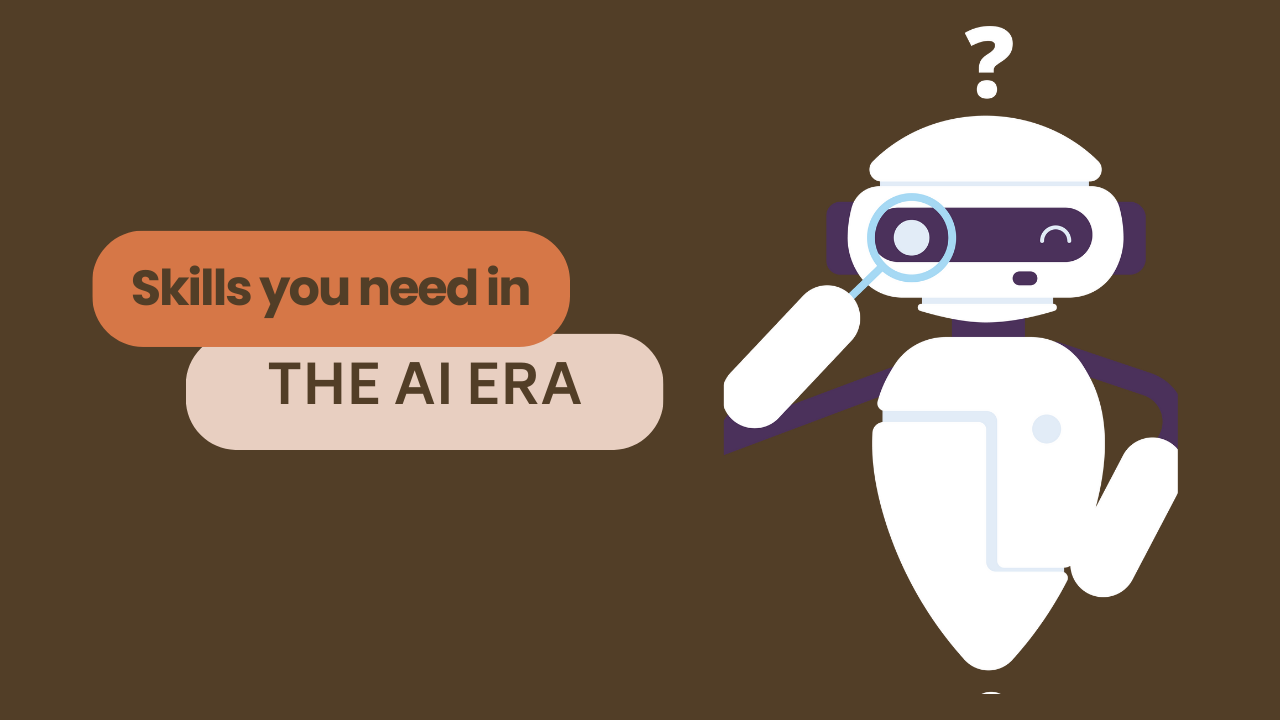The Future Of Design In The AI Era: A Perspective From Microsoft

Table of Contents
AI-Augmented Creativity: Empowering Designers, Not Replacing Them
AI is not here to replace designers; it's here to empower them. AI-powered design tools are augmenting human creativity, enabling designers to work faster, smarter, and more efficiently. Instead of taking over the creative process, AI acts as a powerful collaborator, handling tedious tasks and opening doors to innovative solutions.
- Faster Prototyping and Iteration: AI accelerates the design process by rapidly generating and iterating on design options, allowing designers to explore numerous possibilities in a fraction of the time.
- Exploring Design Variations: AI algorithms can explore a vast range of design variations based on specific parameters, pushing creative boundaries and uncovering unexpected solutions. This is particularly useful in fields like graphic design and UX/UI, where exploring multiple options is crucial.
- Automating Tedious Tasks: AI handles repetitive and time-consuming tasks like image resizing, color correction, and asset organization, freeing designers to focus on higher-level creative and strategic work.
- Microsoft AI Design Tools: Microsoft's commitment to AI-powered design is evident in tools like Microsoft Designer and Copilot, which offer AI-assisted design capabilities, including text-to-image generation and design suggestions.
The relationship between human designers and AI is collaborative. Designers provide the vision and creative direction, while AI assists with execution and exploration. Ethical considerations, such as ensuring transparency and avoiding bias in AI-generated designs, remain paramount.
The Rise of Generative Design: Unlocking New Possibilities
Generative design leverages AI algorithms to explore a vast design space and generate numerous design options based on specified constraints and objectives. This approach significantly expands the possibilities in various design fields:
- Graphic Design: Generating unique logos, illustrations, and marketing materials.
- UX/UI Design: Creating user interfaces and experiences tailored to specific user needs and preferences.
- Architecture: Designing structurally sound and aesthetically pleasing buildings optimized for specific contexts.
- Product Design: Developing innovative product designs that meet functional and aesthetic requirements.
Benefits of Generative Design:
- Increased Efficiency and Speed: Generative design dramatically reduces design time and allows for rapid prototyping.
- Exploration of Novel Solutions: It opens doors to design solutions that might be impossible to conceive through traditional methods.
- Microsoft's Contribution: Microsoft is actively involved in advancing generative design technologies through research and development, as well as integrations within its product ecosystem.
However, challenges remain, including the need for human oversight to ensure the quality and ethical implications of AI-generated designs. The complexity of the algorithms and potential for biases require careful consideration.
Accessibility and Inclusivity in AI-Powered Design
AI has the potential to revolutionize accessibility and inclusivity in design. AI-powered tools can help create designs that are usable and enjoyable for people of all abilities:
- AI-Driven Accessibility Features: AI can automatically generate alt text for images, create captions for videos, and ensure color contrast meets accessibility standards.
- Personalized and Adaptive Design: AI enables the creation of personalized design experiences tailored to individual user needs and preferences, including those with disabilities.
- Addressing Bias in AI: It's crucial to address potential biases in AI algorithms to prevent the perpetuation of inequalities. Microsoft is committed to developing fair and unbiased AI design tools.
- Overcoming Design Barriers: AI can assist in creating designs that overcome physical and cognitive barriers for people with disabilities, leading to more inclusive experiences. Examples include AI-powered screen readers and personalized font adjustments.
The Evolving Role of the Designer in the Age of AI
The role of the designer is evolving in the AI era. While AI handles many tasks, the need for human creativity and strategic thinking remains paramount. Designers need to adapt and acquire new skills:
- Critical Thinking and Problem-Solving: Designers will increasingly focus on defining design problems, setting goals, and evaluating AI-generated solutions.
- AI Tool Proficiency: Understanding and effectively utilizing AI design tools is becoming essential.
- Ethical Considerations: Designers must ensure that AI-generated designs are ethical, unbiased, and meet societal needs.
- Specialization in AI Design: Opportunities are emerging for designers to specialize in AI-related fields, such as generative design and AI-driven accessibility.
Continuous learning and adaptation are vital for designers to thrive in this rapidly changing landscape.
Conclusion: Shaping the Future of Design with Microsoft AI
AI is fundamentally reshaping the design landscape, augmenting human creativity and fostering more efficient and inclusive design processes. The designer's role is evolving, requiring new skills and a focus on strategic decision-making. Microsoft is committed to providing the tools and resources to empower designers in this transformative era. Embrace the future of design with Microsoft AI. Explore the possibilities of AI-powered design and learn more about Microsoft's AI design solutions today!

Featured Posts
-
 The White Lotus And Ariana Grande Connection Patrick Schwarzeneggers Missing Music Video Role
Apr 27, 2025
The White Lotus And Ariana Grande Connection Patrick Schwarzeneggers Missing Music Video Role
Apr 27, 2025 -
 Lifting The Farm Imports Ban Progress In South Africa Tanzania Discussions
Apr 27, 2025
Lifting The Farm Imports Ban Progress In South Africa Tanzania Discussions
Apr 27, 2025 -
 Dax Volatility The Role Of Bundestag Elections And Key Economic Figures
Apr 27, 2025
Dax Volatility The Role Of Bundestag Elections And Key Economic Figures
Apr 27, 2025 -
 Alberto Ardila Olivares El Secreto De La Garantia De Gol Focusing On Method Not Secret
Apr 27, 2025
Alberto Ardila Olivares El Secreto De La Garantia De Gol Focusing On Method Not Secret
Apr 27, 2025 -
 Rocket Launch Abort Blue Origin Cites Subsystem Problem
Apr 27, 2025
Rocket Launch Abort Blue Origin Cites Subsystem Problem
Apr 27, 2025
